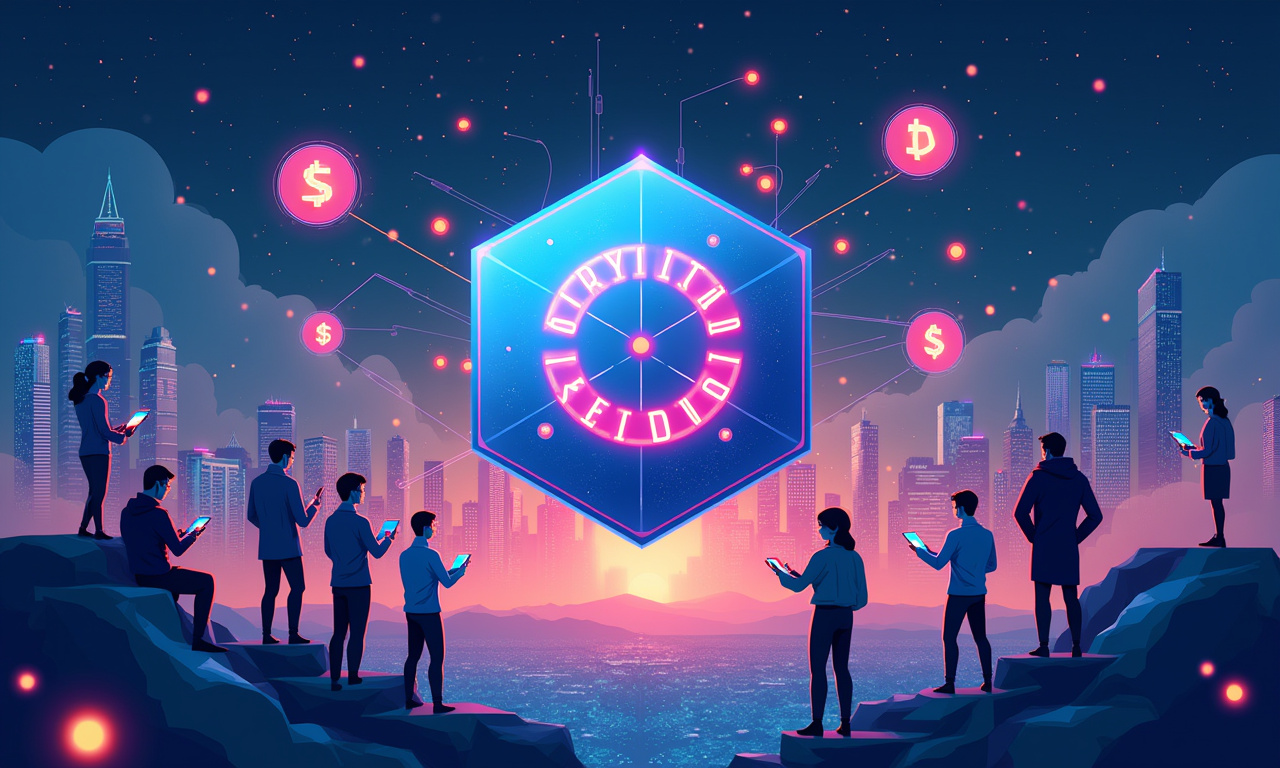Is it just hype, or can a decentralized derivatives exchange really make a difference in a continent facing unique economic challenges? I’m not just shilling for Hyperliquid, though — I want to focus on Hyperliquid’s HLP (Hyperliquidity Provider) model. Let’s face it, Africa is not exactly the first place you think of when you picture world-class DeFi. Perhaps, just perhaps, that’s how we’re all misguided.
DeFi: A lifeline for financial inclusion?
Even in relatively advanced economies like South Africa, traditional finance is riddled with barriers. High inflation, unstable and volatile currencies, and the inability to open banking accounts or receive remittances contribute to an expensive storm of economic contagion. Now imagine getting that kind of news while trying to build a business or save for retirement. Now, imagine your currency dropping half of its value in a few months. That's the reality for millions.
This is where DeFi, and craftware like Hyperliquid’s HLP, could provide a bridge to financial freedom. Unlike other HLP models, users are able to deposit other ERC-20 tokens alongside USDC and customer market-making, receiving a cut of platform revenue. Think about it: bypassing traditional banks and directly engaging in the global financial system. This is not just a tech challenge, it is an accessibility challenge.
Hyperliquid isn't some VC-backed behemoth looking to extract value. The HYPE token distribution was highly community-focused, with the majority being airdropped to early adopters. No big VC allocation. This is crucial. Not only is it the right thing to do, it fits perfectly with the ethos of decentralization and equitable access. Restoring power back to the public — not hoarding it to a few big players — is what this is all about. This is empowering!
HLP: Passive income in a volatile world?
Let's be clear: DeFi is risky. The JELLY incident, where a maliciously short squeeze artificially inflated the price of JELLY LIQUID asset causing a $10 million loss on Hyperliquid, demonstrates this. It’s a tragic reminder of the vulnerabilities that are deeply rooted within this space. Still, despite the risk, the possible rewards, particularly in a region devastated by currency devaluation, are enticing enough to tempt fate.
HLP is a great way to earn yield on USDC, a US dollar-pegged stablecoin. To a person living in a developing country where the local currency is devaluating every second, this would be revolutionary. It’s a tool for economic empowerment, protecting savings from the hyperinflation of an unstable currency and earning passive income in a stable currency.
It is not a free lunch. The HLP vault builds control over risk mitigation through market-making and arbitrage strategies. It incentivizes liquidity providers through 3 mechanisms – trading fees, funding payments, and liquidation penalties. You need to understand the risks involved. Isn’t that the nature of opportunity?
Small business owners: Access to capital and hedging against currency fluctuations.
Individuals: A way to save and invest outside of traditional banking systems.
Communities: Creating decentralized microfinance initiatives.
DeFi is complex. Learning about blockchain technology, smart contracts, and risk management will go a long way in helping investors and innovators engage safely and effectively. This is where education comes in.
Education: The key to unlocking potential?
Hyperliquid, and all DeFi platforms, need to do better. From a user-centered design perspective, they must provide educational materials and strong user support, especially in communities with lower levels of financial literacy. This isn't just about providing technical documentation; it's about creating accessible and engaging content that empowers people to make informed decisions.
Hyperliquid’s HYPE token is used for governance, staking, and gas fees. This simple, flexible tool can serve as a major motivator for engagement and provide users with a clearer sense of navigation on their platform. By staking HYPE, users can earn exclusive access to reduced trading fees and have a say in governance decisions. It’s making sure that we create an ecosystem that is community driven and has everybody’s voice at the table.
Let's not get carried away. Challenges remain. In much of Africa internet reach remains underdeveloped and costly. Regulatory uncertainty surrounding cryptocurrencies creates additional hurdles. There’s the constant concern of potential scams and fraud.
- DeFi workshops in local communities: Breaking down complex concepts in simple terms.
- Mentorship programs: Connecting experienced DeFi users with newcomers.
- Partnerships with educational institutions: Integrating blockchain technology into the curriculum.
In spite of these obstacles, the promise of DeFi to put African communities in charge of their financial futures is real. We open the doors to various financial services. This unlocks economic opportunities that benefit us all and helps build a more inclusive and equitable financial system.
Hyperliquid's HLP model isn't a silver bullet. It's just one piece of the puzzle. When paired with the right education and advocacy, interdepartmental coordination, and meaningful community engagement, it has the potential to be a powerful tool for change. This is not hype, this is hope.
Let's not get carried away. Challenges remain. Internet access in many parts of Africa is still limited and expensive. Regulatory uncertainty surrounding cryptocurrencies creates additional hurdles. And, of course, there's the ever-present risk of scams and fraud.
But, despite these challenges, the potential of DeFi to empower African communities is undeniable. It's about providing access to financial services, creating opportunities for economic growth, and fostering a more inclusive and equitable financial system.
Hyperliquid's HLP model isn't a silver bullet. It's just one piece of the puzzle. But, with the right education, support, and community engagement, it could be a powerful tool for change. It is not just hype, it is hope.




